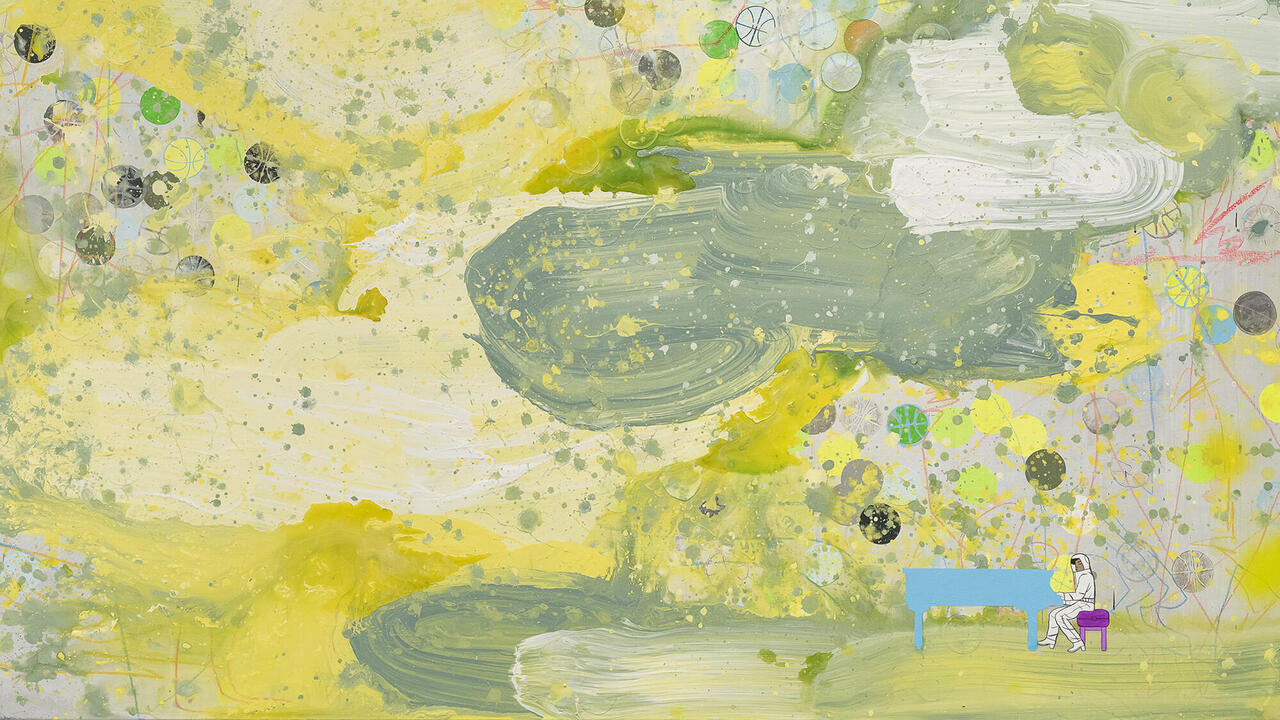Hilja Keading

What is the difference between a human and a bear? It’s the kind of problem the right artist can turn from a joke into a serious question about the metaphysical distinction between nature and performance. Hilja Keading recently took on the matter wearing a sundress and no shoes, in a tiny, kitschy bedroom that she shared with Bonkers, a live black bear, for a time period that seemed indefinite, or recursive, or simply longer than one would want to spend in close proximity to a bear, trained or not. The Bonkers Devotional (2010), a video record of these events, edited as deliberately as a Hollywood thriller, was projected deep within Angles Gallery, on two screens competing to unsettle us with close-ups (those paws! that nape!) and medium shots (did it just cuff her?), inside a room mocked up as a kind of hunting blind: roofed with camouflage netting, equipped with a viewing bench and covered without by a videotaped sea of quaking aspen leaves.
More than just an homage to Joseph Beuys’ iconic date with a coyote (I Like America and America Likes Me, 1974), the piece spans a surprisingly fresh range of emotional effect and conceptual association. The small, gestural paintings Keading paired with The Bonkers Devotional confirmed one’s suspicions that the whole could be read as a metaphor for the queasy, comic project of all art. That is, the piece is less a heroic, Beuysian act of political and personal mythology than an old-fashioned self-portrait by an unreconstructed Modernist – still aspirational, but shot through with a recognition of mystery and fear of limitation. Of her colossal, Jungian encounter, staged in circumstances tawdry by necessity, Keading’s hands can make only the paintings: small, slapdash instances of handmade beauty, a result at once tragic and inspiring.
Thus Keading’s skillful direction pushes us quickly past her gimmick, subverting clichés of ‘relationship to nature’ or ‘sexual politics’ and making those actual relations, in the midst of their mediation and marginalization by technological means, seem restored to concrete, wild life: erotic and life-threatening, manipulable and inevitable, magical and mundane, furry and prickly. The animal may be trained, but he’s still a bear; the artist may be trained, but she’s still a human.
What’s best about this metaphor in the room is how thoroughly we feel that the artist has both created and been subjected to its circumstance: she is of course both the bear and the woman. Thus the natural and the human are returned to one, and she is both innocent of and culpable for our worry and our thrill. Indeed, even our reactions seem orchestrated equally by nature and by her, making them feel simultaneously intrinsic and imposed. Autumn leaves, naturally nervous, compulsively beautiful, have never seemed so neurotic about their impending demise as they do when shot close-up and at such a high frame-rate, and you’ve never quite felt the absurdity of the human conception of time the way you have when you’ve watched an 800-pound bear slowly lick a cheap clock.
















